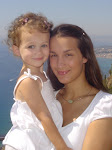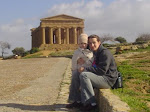After reading chapter five, my view of performance as a phenomenon has deepened based on the many examples given. When I think of performance I think of the act someone does in order to entertain; puppet shows, plays, comedy shows, musicals, sports games. These are all performances that encompass signs or markers “that let us know a performance is about to take place, is taking place, and is finished” (141). The examples of performance given in the chapter broadened my view of what an actual performance entails. Not only can a performance be an event as listed above but even as simple as “performances of folklore that happen naturally within daily conversations and situations” (128). On page 128, the author gives example of two friends talking about the school semester and one says, “Be careful-don’t count your chickens before they are hatched.” I have heard this proverb a million times and have even said it myself, but not until after reading this chapter did I realize it is an act of performance.
I thought of all the aspects of performance but failed to think of the people being entertained; the audience. The relationship between the performer and the audience is important to the overall interpretation of the performance. Looking even closer into this relationship, the social context is an element of great importance to the performance. The social context includes “those things that relate to the group, community, and culture within the communicative expression takes place” (139). This brings me back to the two friends talking about the school semester, this is also mentioned in the book, if they did not share the same culture, perhaps an exchange student, and this proverb was said, he or she might not have understood its connotation. In order for the performance to be interpreted correctly, the element of social context must be present in order for the performer/audience relationship to take place.
Social context, markers, and everyday verbal communication are only a few of the elements that craft a performance. Chapter five spoke of the many aspects of performance which allowed me to broaden my view of how a performance is created and the characteristics surrounding it.
“This blog entry is my response to the chapter five reflection question.”
Sims, Martha C., and Martine Stephens. Living Folklore An Introduction to the Study of People and Their Traditions. Logan, Utah: Utah State University Press, 2005.
Sunday, November 18, 2007
Subscribe to:
Post Comments (Atom)








1 comment:
thanks
Post a Comment